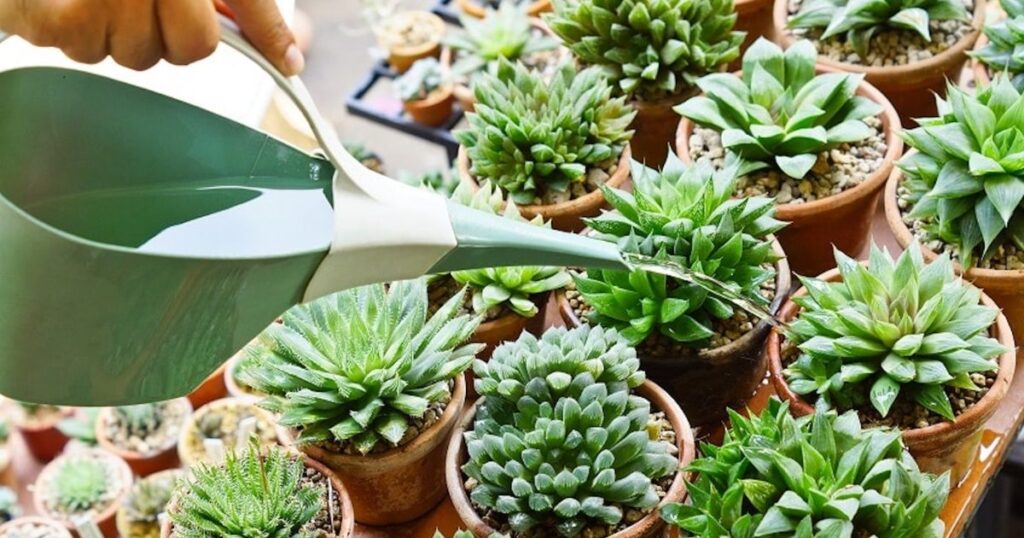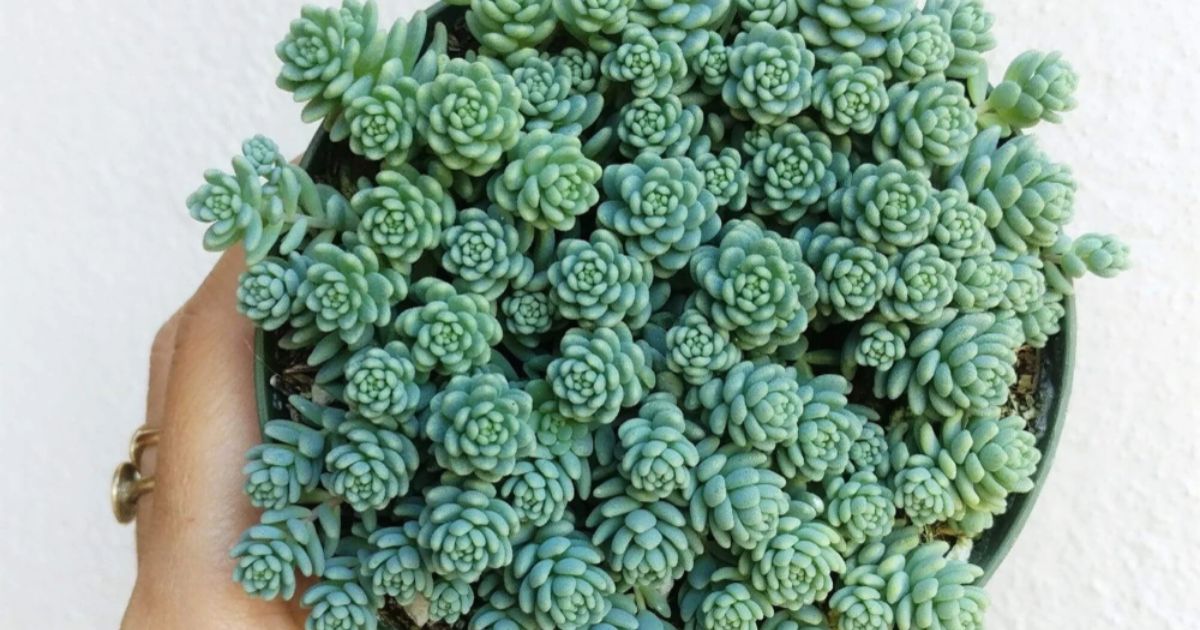What Is Too Cold For Succulents? Succulents, a diverse group of water-storing plants known for their hardiness, face challenges when exposed to excessively low temperatures. “Too Cold For Succulents” refers to the critical threshold beyond which these plants struggle to thrive, leading to potential damage or even death.
What Is Too Cold For Succulents? Understanding the temperature limits for succulents is crucial for cultivating a thriving garden. Imagine a delicate balance in nature, where these hardy plants, usually resilient to diverse conditions, face vulnerability when temperatures plummet.
What Is Too Cold For Succulents? Succulents, with their fleshy leaves and water-storing adaptations, navigate a fine line between endurance and susceptibility to cold temperatures. The threshold of cold tolerance varies among different succulent species, making it essential for enthusiasts to understand the specific needs of each plant.
What Temperature Is Too Cold For Succulents?
What Temperature Is Too Cold For Succulents? Succulents, those charming water-storing plants celebrated for their resilience, have their limits when it comes to cold temperatures. In general, most succulents prefer temperatures between 60°F to 75°F (15°C to 24°C) and can withstand a mild frost. When venturing into colder climates or facing unexpected frost, understanding how to protect succulents from frost becomes crucial. To shield these hardy plants from the adverse effects of freezing temperatures, consider employing protective measures such as covering them with frost cloths or blankets, moving them indoors during frosty nights, or applying a layer of mulch around their base. By taking these precautions, you can help ensure that your beloved succulents not only survive but continue to thrive despite the challenges posed by chilly weather.
The critical threshold varies among different succulent species, and temperatures below 40°F (4°C) can spell trouble. At these chilly levels, the metabolic processes crucial for succulents’ health slow down, making them susceptible to damage. Gardeners need to be mindful of the specific temperature preferences of their succulents to ensure these hardy plants thrive in their care.
Best Temperatures For Succulents

Succulents, those charming water-storing plants admired for their resilience, thrive best within specific temperature ranges. The best temperatures for succulents generally range from 60°F to 80°F (15°C to 27°C). In this sweet spot, these hardy plants exhibit optimal growth, vibrant colors, and overall well-being.
When temperatures venture beyond this range, succulents may face challenges, with extremes of heat or cold potentially causing stress or damage. Therefore, maintaining a cozy environment within the ideal temperature spectrum ensures that your succulents will flourish and adorn your space with their unique beauty. Whether indoors or outdoors, providing the right temperatures is a simple yet crucial aspect of caring for these delightful plants.
Impact Of Temperature On Succulents
The Impact of Temperature on Succulents is a crucial factor influencing the health and growth of these unique plants. Succulents, known for their ability to store water in their leaves and stems, exhibit diverse responses to temperature fluctuations. Extreme heat or cold can stress succulents, affecting their metabolism and water balance.
Maintaining an optimal temperature range is key to ensuring the well-being of succulents. While they are generally more tolerant of heat than cold, it’s essential to be mindful of the specific temperature preferences of different succulent species. Proper care, including providing shade during scorching heat and protection from frost in colder climates, plays a crucial role in helping succulents thrive
Cactus Removal Services In Phoenix, Arizona
In Phoenix, Arizona, cacti are an iconic part of the landscape, but there are times when their removal becomes necessary. Cactus removal services in Phoenix cater to homeowners and businesses facing issues with unwanted or hazardous cacti on their properties.
These services offer professional assistance in safely and efficiently removing cacti, addressing concerns such as overgrowth, potential dangers, or the need for landscaping changes. With their expertise in handling the unique challenges posed by cacti, these removal services in Phoenix ensure a smooth process, leaving properties free from the presence of unwanted cacti while preserving the beauty of the Arizona desert surroundings.
Can Succulents Stay Outside In Winter?
Can Succulents Stay Outside In Winter? While succulents are renowned for their resilience, their ability to withstand winter conditions outdoors depends on various factors. In milder climates with minimal frost, many succulent varieties can thrive outdoors year-round. In colder regions where temperatures drop significantly, it’s advisable to take precautions.
Providing proper care is essential for succulents during the winter. Consider factors such as frost intensity, moisture levels, and sunlight exposure. Adding a layer of mulch around the base of outdoor succulents can help insulate the soil and regulate temperature. Additionally, situating succulents in sheltered areas, such as against a south-facing wall, can offer some protection from harsh winter winds.
FAQ’s
Can all succulents survive winter outdoors?
While many succulents can endure milder winter conditions, the ability to survive outdoors depends on the specific species and the severity of the winter temperatures.
How can I protect my outdoor succulents from winter frost?
Mulching around the base of succulents helps insulate the soil, while placing them in sheltered locations, like against a south-facing wall, provides additional protection from harsh winter winds.
Do all succulents require the same winter care?
No, the winter care for succulents varies based on factors such as species, local climate, and individual plant needs. Understanding these nuances is crucial for proper winter succulent care.
Can I leave my succulents outside in freezing temperatures?
Succulents sensitive to freezing temperatures should be brought indoors or provided with additional protection, such as covering them with frost cloth, during periods of extreme cold.
Is it necessary to water succulents differently in winter?
Yes, succulents generally need less water in winter due to reduced growth. Adjusting your watering routine based on the seasonal needs of your succulents helps prevent overwatering during colder months.
Conclusion
In the realm of succulents and winter, a mindful approach ensures the well-being of these unique plants. Whether they can stay outside depends on your local climate and the type of succulents you have. Some, like the resilient ones, might brave the winter chill, while others may benefit from a cozy spot indoors. Understanding their needs and making small adjustments, like adding a layer of mulch or finding a sheltered corner, goes a long way in keeping your succulents happy through the colder months.
As you navigate the intricacies of winter care for succulents, remember that each plant is a testament to nature’s adaptability. With a touch of attention and a dash of seasonal adjustments, your succulents can continue to thrive, bringing a touch of greenery to your surroundings even when the world outside is covered in snow. Embracing these small gestures ensures that your succulents not only endure winter but emerge vibrant and ready to flourish when the warmer days return.










